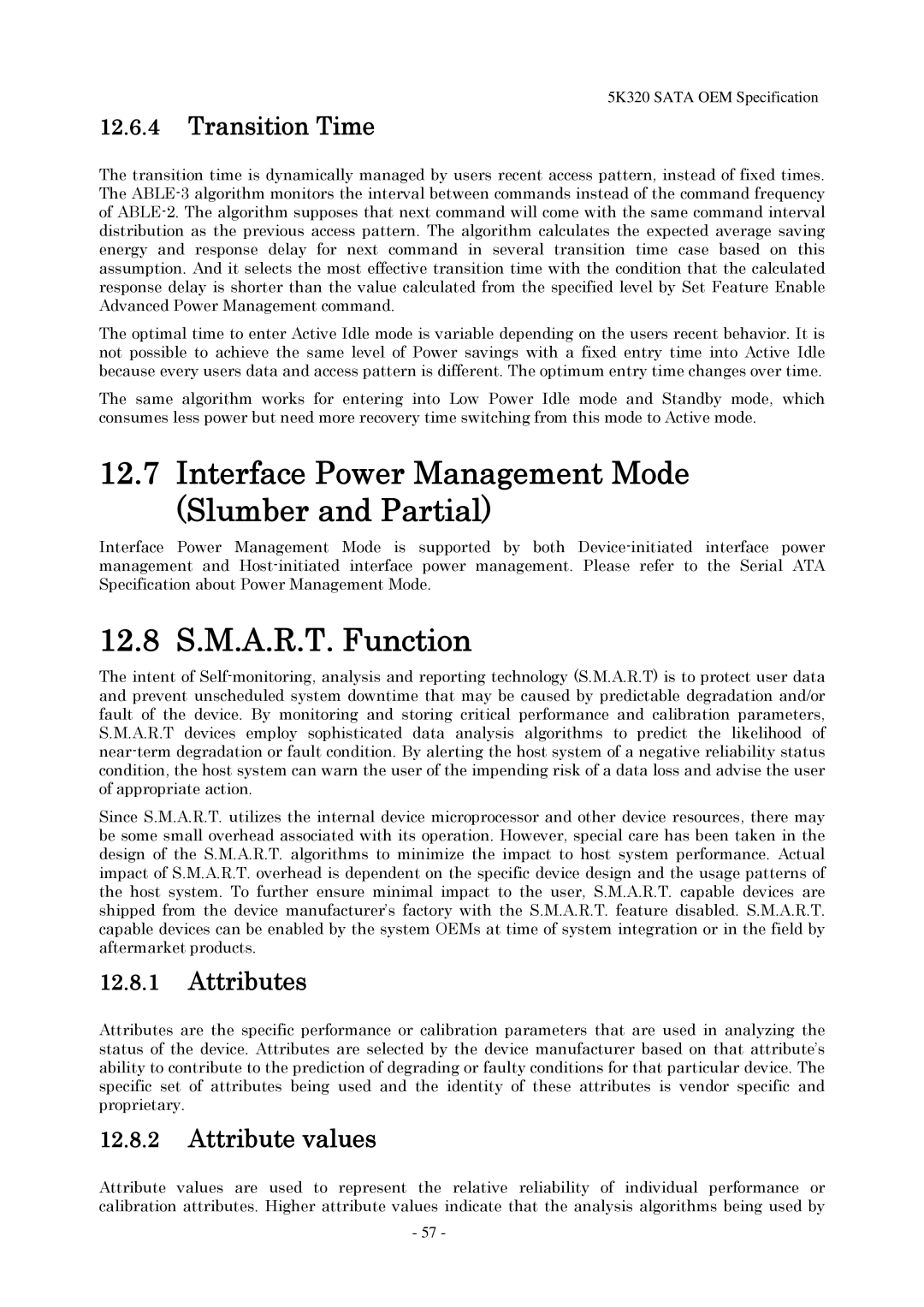5K320 SATA OEM Specification
12.6.4Transition Time
The transition time is dynamically managed by users recent access pattern, instead of fixed times. The
The optimal time to enter Active Idle mode is variable depending on the users recent behavior. It is not possible to achieve the same level of Power savings with a fixed entry time into Active Idle because every users data and access pattern is different. The optimum entry time changes over time.
The same algorithm works for entering into Low Power Idle mode and Standby mode, which consumes less power but need more recovery time switching from this mode to Active mode.
12.7 Interface Power Management Mode (Slumber and Partial)
Interface Power Management Mode is supported by both
12.8 S.M.A.R.T. Function
The intent of
Since S.M.A.R.T. utilizes the internal device microprocessor and other device resources, there may be some small overhead associated with its operation. However, special care has been taken in the design of the S.M.A.R.T. algorithms to minimize the impact to host system performance. Actual impact of S.M.A.R.T. overhead is dependent on the specific device design and the usage patterns of the host system. To further ensure minimal impact to the user, S.M.A.R.T. capable devices are shipped from the device manufacturer’s factory with the S.M.A.R.T. feature disabled. S.M.A.R.T. capable devices can be enabled by the system OEMs at time of system integration or in the field by aftermarket products.
12.8.1Attributes
Attributes are the specific performance or calibration parameters that are used in analyzing the status of the device. Attributes are selected by the device manufacturer based on that attribute’s ability to contribute to the prediction of degrading or faulty conditions for that particular device. The specific set of attributes being used and the identity of these attributes is vendor specific and proprietary.
12.8.2Attribute values
Attribute values are used to represent the relative reliability of individual performance or calibration attributes. Higher attribute values indicate that the analysis algorithms being used by
- 57 -
